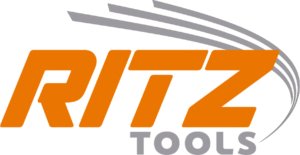
Regular Inspection is Key
Before and after every use, inspect your tools. Look for signs of wear, damage, or corrosion. Regular checks help identify issues early, ensuring tools remain safe and effective. Damaged equipment can lead to accidents. Always prioritize safety.
Clean After Use
Dirt, grease, and moisture can damage your tools. After each use, clean them thoroughly. Use a damp cloth for general cleaning. For stubborn stains, consider using a mild detergent. Remember to dry your tools completely to prevent rust.
Proper Storage Matters
Store your tools in a cool, dry place. Moisture can cause corrosion, reducing tool lifespan. Use toolboxes or pouches to organize and protect them. Proper storage prevents accidental damage and ensures easy access when needed.
Lubricate Moving Parts
Some lineman tools have moving parts. Regular lubrication ensures they operate smoothly. Use the recommended lubricant for each tool. Avoid over-lubricating, as this can attract dirt and grime.
Sharpen Blades and Cutters
Sharp tools are safer and more efficient. Regularly sharpen blades and cutters to maintain their effectiveness. Use a sharpening stone or a professional service. Dull tools can slip, increasing the risk of accidents.
Lineman tools are essential for their challenging job. Proper maintenance ensures these tools last longer and function safely. By following the tips above, linemen can confidently carry out their duties, knowing their equipment is in the best condition. Remember, safety first!
How often should I inspect my lineman tools for wear and damage?
It’s essential to inspect your lineman tools before and after every use. Regular checks help in early identification of wear, damage, or corrosion, ensuring the tools remain safe and effective for the job.
What’s the best way to clean and prevent rust on lineman equipment?
To clean lineman equipment, use a damp cloth for general cleaning. For stubborn stains or residues, a mild detergent can be effective. To prevent rust, always ensure your tools are completely dry before storing them. Applying a thin layer of protective oil can also help in preventing rust.
How do I properly store lineman tools to ensure their longevity?
Store your lineman tools in a cool, dry place away from direct sunlight and moisture. Using toolboxes or pouches can help in organizing and protecting them. Proper storage not only prevents accidental damage but also ensures easy access when needed.
Which lubricants are recommended for lineman tools with moving parts?
It’s best to use the lubricant recommended by the tool’s manufacturer. If that’s not available, a general-purpose lubricant can be used. However, always ensure it’s suitable for the specific tool and doesn’t attract dirt or grime.
How can I sharpen the blades and cutters of my lineman tools at home?
You can use a sharpening stone or a specialized tool sharpener for blades and cutters. Ensure you follow the correct technique and angle for sharpening. If unsure, consider seeking professional sharpening services to maintain the tool’s effectiveness and safety.


